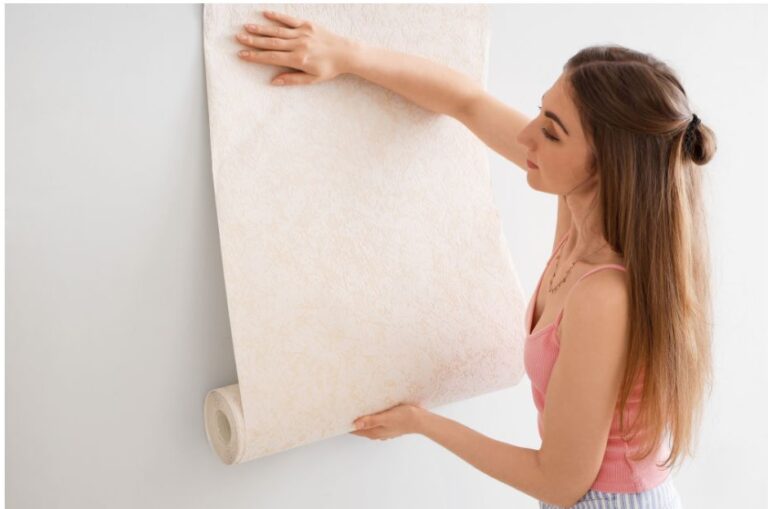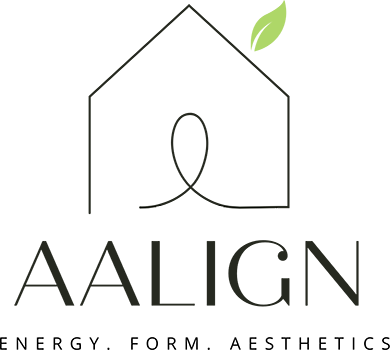Designing spaces that are both beautiful and practical should never compromise health or the well-being of the planet. Choosing eco-friendly wall coverings that are low in toxins or free from harmful chemicals allows us to bring personality into our homes while supporting better indoor air quality.
By selecting these mindful materials, we protect not only the ambiance of our interiors but also contribute to a healthier, more sustainable environment for ourselves and for generations to come. Making intentional choices in our surroundings reflects a deeper commitment to wellness and environmental responsibility.
(For a curated selection of eco-conscious brands offering cleaner & safer products, we invite you to explore our shop page.)
Each brand we share is carefully selected to support your journey toward healthier living spaces. Through our affiliate links, you can easily access products, allowing us to earn a small commission at no extra cost to you.
Types of Wall-Coverings on the Market
The following three types cover a broad spectrum of styles, budgets, and practical needs, making them the most frequently used wall coverings in homes and commercial spaces.
1. Wallpaper
- Vinyl: Durable and moisture-resistant, ideal for kitchens and bathrooms.
- Textured: Adds depth and dimension with various patterns and materials.
- Non-Woven: Tear-resistant and easy to install or remove.
- Grasscloth: Made from natural grasses for a unique, textured look.
- Flocked: Features raised, velvet-like patterns for a luxurious feel.
- Metallic: Adds shine and a modern touch with reflective finishes.
2. Fabric Wall Coverings
- Linen: Durable with a natural, textured appearance.
- Silk: Elegant with a soft sheen, suitable for formal spaces.
- Cotton: Soft, breathable, often used in fabric panels.
3. Natural Wall Coverings
- Bamboo: Sustainable and eco-friendly with a natural aesthetic.
- Cork: Hypoallergenic, antimicrobial, and provides sound insulation.
- Wood Veneer: Thin wood layers for warmth and a natural feel.
- Hemp: Strong, moisture-resistant, and eco-friendly.
- Sisal & Jute: Textured plant fibers, good for soundproofing.
- Mica: Stone flakes that add shimmer and elegance.
4. Paintable Wall Coverings
- Anaglypta: Raised patterns, customizable with paint.
- Lincrusta: Embossed, paintable, often used in traditional interiors.
5. Murals and Decals
- Murals: Large-scale images covering entire walls.
- Wall Decals: Removable stickers for easy decoration.
6. Faux Finishes
- Faux Wood: Imitates wood for a warm, rustic look.
- Faux Stone: Mimics stone for a natural, rugged feel.
7. Acoustic Wall Coverings
- Acoustic Panels: Reduces noise and improves sound quality, often fabric-covered.
How Can Wall Coverings Be Harmful To Your Health?
Toxic wall coverings are wallpapers or wall coverings that contain harmful chemicals such as lead, formaldehyde, cadmium, and certain flame retardants.
These substances release volatile organic compounds (VOCs) into the air, which are fumes that can irritate your eyes, skin, and lungs. Long-term exposure may contribute to respiratory issues and other health problems.
Because of this, it’s important to choose safer, low or non-toxic alternatives for a healthy indoor environment.

Health Risks associated with Chemicals present in Wall Coverings
- Volatile Organic Compounds (VOCs), formaldehyde, and other chemicals can be present in adhesives used to apply wall coverings.
- Phthalates: Phthalates, a type of plasticizer, can be used in the manufacturing process for vinyl wall coverings. Its used to make vinyl wall coverings flexible. They are endocrine disruptors and are harmful to human health.
- Heavy metals in Wall Coverings: Heavy metals, such as lead, cadmium, and mercury, can be found in pigments and vinyl wall coverings. For example, cadmium exposure can irritate the lungs and kidneys and potentially increase cancer risks. Lead-based pigments in wallpaper pose a serious health hazard, especially for children, as lead poisoning can cause developmental delays, learning disabilities, and even behavioral problems.
- Flame Retardants: Some wall coverings, especially those with foam backing, may contain flame retardants like PBDEs or organophosphate compounds. While these are added to meet fire safety standards, flame retardants pose health risks, such as endocrine disruption and developmental issues in children. Additionally, preservatives used in paint can cause respiratory irritation and have been linked to cancer.
- Synthetic Dyes and Pigments: Synthetic dyes and pigments are commonly used in paints and wall coverings to achieve a wide color range. Some pigments may contain heavy metals like lead, cadmium, or chromium. These substances are harmful and can lead to health issues such as neurological damage, respiratory problems, and, in some cases, an increased risk of cancer.
- Formaldehyde: Found in some paints and wall coverings, particularly in adhesives and the manufacturing process It is also a common concern in pressed wood products used for wall paneling or substructures behind wallpaper. It can off-gas into the air, leading to respiratory irritation, eye and throat irritation, and has been classified as a carcinogen with long-term exposure potentially increasing cancer risks.
What are the short-term and long-term effects of these chemicals?
- Short-term effects of chemicals in paint can include headaches, dizziness, irritation of the eyes, nose, and throat, respiratory issues, and nausea.
- Long-term effects: Potential damage to the liver, kidneys, nervous system, and increased cancer risk.
Which chemicals specifically can have long-Term Effects or off-gas for years?
- VOCs
- Formaldehyde
- Phthalates
- Heavy metals
- Synthetic dyes and pigments
- Isocyanates
Low- or Non-Toxic Wall Coverings and Safer Alternatives

- Prioritize low-toxic wallcoverings. Look for products labeled “untreated,” using “natural dyes and adhesives,” or certified as GREENGUARD GOLD or FSC.
Natural Materials:
Linen, hemp, bamboo, cork, and grasscloth offer natural, sustainable options.
Wood veneer adds a touch of luxury while maintaining natural elements.
Natural mica provides a shimmery, eco-friendly finish.
Modern Materials:
Glass fiber wallcovering: Durable, washable, and often recycled.
Peel-and-stick wallcoverings: Choose low-VOC options with natural adhesives when possible.
Acrylic wallcoverings: Opt for low-VOC or water-based formulations.
Low-VOC vinyl wallcoverings: A less toxic alternative to traditional vinyl.
Recycled wallcoverings: Made from recycled materials, reducing environmental impact.
FSC-Certified Wallpapers: FSC certification ensures that the paper used in these wallpapers is responsibly sourced. Low-VOC adhesives and water-based inks are often used in these wallpapers.
PVC-Free Wall Coverings: PVC, or polyvinyl chloride, is commonly used in traditional wallpapers but releases harmful chemicals over time. PVC-free wall coverings avoid these issues and are often made from safer plastics or other synthetic materials that don’t emit toxic gases.
Select wall-coverings and paints explicitly labeled as “formaldehyde-free,” “flame retardant-free,” “heavy metal-free,” and “low-VOC” or “VOC-free.” Look for certifications like GREENGUARD GOLD, Cradle to Cradle Certified, and FSC to ensure product safety and sustainability.
Ask questions: Don’t hesitate to inquire about the materials used in any wall covering before purchasing.
If your home was built before 1978, consider removing old wallpaper that may contain lead or other hazardous materials. For safe removal, consult a professional.
Ventilation: After and during the installation of any wall covering, proper ventilation is crucial to minimize exposure to off-gassing.
Research brands: Look for reputable brands known for using safe materials.

Key Certifications & Labels to Look For Wall Coverings
For VOC Content:
- Look for wall coverings and paints labeled as low-VOC or VOC-free to minimize exposure to harmful compounds.
For Third-Party Certifications:
- GREENGUARD GOLD: Indicates low chemical emissions and better indoor air quality.
- Cradle to Cradle Certified: Ensures products are environmentally safe and sustainably produced.
- LEED-Certified: Confirms that products meet high standards for sustainability and low environmental impact.
These certifications and labels help ensure that products meet strict criteria for reduced chemical emissions and eco-friendliness.
Brand that offer Eco-Friendly Wall Coverings:
Listed below are some reputable brands that are known for their commitment to health and sustainability:
Wallism
Certifications: FSC-Certified Paper (sustainably sourced), 100% PVC-Free, Non-Toxic Materials
Best For | Eco-conscious shoppers looking for bold, customizable wall murals and wallpapers with a Scandinavian-modern aesthetic
Products | Matte paste-the-wall wallpaper, peel-and-stick removable wallpaper, custom wall murals
Unique Features |
Wallism specializes in made-to-order wallpaper designed to minimize waste and maximize style. All products are PVC-free, non-toxic, and printed on FSC-certified paper, making them a safer choice for both homes and commercial spaces. Just a heads-up: while their materials are low-toxicity, they are not GREENGUARD Gold certified.
Wallism’s real standout is their design flexibility—offering over 12,000 modern, artistic patterns, from nature scenes to bold abstracts. Every mural is customized to your exact wall dimensions, giving a perfect fit without excess waste. Their look leans Scandinavian and minimalist, but with enough color and texture options to work across many styles. They also collaborate with emerging artists, adding an exclusive, curated feel to their collections.
Price | Mid-to-high range
Thatcher Studio
Certifications: PVC-Free, Climate Neutral Certified
Best For | Hand-printed, eco-conscious wallpaper with high-quality designs
Products | Residential wallpaper, commercial wallpaper, fabric, pillows
Unique Features | Thatcher Studio produces wallpaper using a hand-screen printing process, where water-based inks are used on sustainably sourced paper. The brand is committed to reducing its environmental footprint and is Climate Neutral Certified, meaning they offset their carbon emissions. Their wallpapers are PVC-free, and they use recyclable packaging, further demonstrating their eco-conscious approach. The wallpaper designs are distinctive, offering a blend of modern art and classic styles, ideal for both residential and commercial spaces.
Price | Mid to high-range, starting around $300 per roll
Farrow & Ball
Certifications: Certified B Corporation, Low VOC), Renewable Energy, Recyclable Packaging
Best For |Shoppers looking for luxury, historically inspired paints and wallpapers with strong environmental commitments
Products | Interior and exterior paints (132 colors plus seasonal releases), traditional wallpapers, and decorating books
Unique Features | Farrow & Ball blends rich tradition with serious sustainability. Founded in 1946 in Dorset, England, they were the first paint brand to switch entirely to water-based paints, cutting VOC emissions dramatically. Their manufacturing runs on 100% renewable energy, with zero waste sent to landfill. Just a heads-up: while their paints are low-VOC and water-based, they are not completely free of VOCs—but well below most conventional brands.
Their real standout is craftsmanship and character. Every paint color is inspired by historical palettes or nature, with signature names that add storytelling to every wall. Wallpapers are hand-finished using traditional printing methods, giving a depth and texture that’s hard to match. Farrow & Ball’s look leans timeless, layered, and deeply curated—ideal if you want a home with real atmosphere, not just surface-level style.
Price | Premium to luxury
Chasing Paper
Certifications: PVC-Free, Water-Based Inks
Best For | Removable, eco-friendly wallpaper solutions for temporary or permanent installations.
Products | Peel-and-stick wallpapers, custom prints, and wall decals.
Unique Features | Chasing Paper uses PVC-free materials and water-based inks, making their wallpapers low in VOCs and safer for indoor air quality. Their peel-and-stick design is easy to apply and remove without leaving residue, which is perfect for renters or those wanting a temporary solution. Their products are made from recyclable substrates, aligning with eco-conscious practices. The brand offers a wide range of designs that are both trendy and sustainable, ensuring a minimal environmental impact.
Price | Mid-range, starting at around $3+/sq ft depending on the design and material
York Wallcoverings
Certifications: Low-VOC, Eco-Friendly Materials, Sustainable
Best For | Eco-friendly, low-VOC wallpapers for healthier indoor environments
Products | Wallpaper collections, including traditional, modern, and custom designs
Unique Features | York Wallcoverings uses water-based inks and eco-friendly materials for their wallpaper, reducing harmful emissions and supporting better indoor air quality. Their wallpapers are designed with recyclable substrates, making them a more sustainable choice. They also focus on durable, long-lasting designs that help reduce waste over time, contributing to both aesthetic and environmental benefits.
Price | Mid-range, $50+ per roll
Spoonflower Wallcoverings
Certifications: Water-Based Inks, Non-Toxic, Sustainable
Best For | Custom, eco-friendly wallpaper with unique designs for personalized, healthier spaces.
Products | Custom-printed wallpaper, including peel-and-stick and traditional options.
Unique Features | Spoonflower uses water-based inks, making their wallpapers non-toxic and safer for indoor air quality. Their products are printed on-demand, minimizing waste and offering a high degree of customization. Spoonflower’s wallpapers are made with eco-friendly substrates, and their commitment to sustainability extends to their zero-waste production process. They also offer a wide variety of unique designs from independent artists, which adds a personal touch to your space while supporting eco-conscious practices.
Price | Mid-range, starting at around $5+/sq ft depending on the design and material
Walls by Me
Certifications: Non-Toxic, Low-VOC
Best For | Custom, eco-friendly wallpaper for personalized and healthier space.
Products | Custom-printed wallpapers, including peel-and-stick and traditional options.
Unique Features | Walls by Me offers a range of wallpapers printed with non-toxic, low-VOC inks, ensuring safer air quality for your home. They use eco-conscious materials, including sustainably sourced substrates, and offer both peel-and-stick and traditional wallpaper options that are customizable for a unique touch. Their commitment to reducing environmental impact is reflected in their sustainable production methods, and they provide designs that cater to a variety of styles while maintaining a focus on non-toxic, healthy home environments.
Price | Mid-range, starting at around $4+/sq ft depending on design and material
Bobbi Beck
Certifications: FSC-certified paper, Carbon-Neutral.
Best For | Luxury, eco-conscious wallpaper with custom designs.
Products | Residential wallpaper, murals, and custom designs
Unique Features | Bobbi Beck specializes in luxury, hand-crafted wallpaper that prioritizes sustainability. Their products are made using FSC-certified paper and printed with water-based inks to minimize environmental impact. The brand is carbon-neutral, offsetting emissions from production and shipping. Packaging is recyclable or biodegradable, and they offer a custom design service. Their collections feature a variety of styles, including botanical, geometric, and mural designs, perfect for both residential and commercial spaces.
Price | High-end, starting around $120+ per roll
Tempaper & Co.
Certifications: FSC Certified
Best For | Eco-friendly wallpaper with natural textures
Products | Peel-and-stick wallpaper, unpasted wallpaper, Grasscloth wallpaper
Unique Features | Tempaper & Co. focuses on creating stylish, sustainable wallpaper options, including their renowned Grasscloth collections. These are made from natural, sustainable fibers like jute and sisal, offering unique textures for any space. Their wallpaper comes in both traditional unpasted and peel-and-stick varieties, making it ideal for easy installation and environmentally-conscious design. The brand emphasizes the use of non-toxic materials in production, ensuring that its wallpapers are safe for home environments. Tempaper’s Grasscloth wallpapers are handwoven and biodegradable, aligning with eco-friendly values without compromising on luxury.
Price | $33 for samples, $330 per double roll (covers ~60 sq ft)





